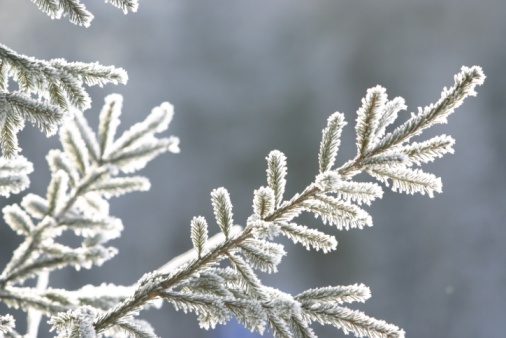Alpine seedlings fight frost
If unpredictable freezing events and drought conditions increase under climate change scenarios, preserving seeds from low altitudes can be useful for restoration purposes
In a sunburnt country, the alpine areas of Australia are often overlooked. PhD student in the Research School of Biology, Veronica Briceño, uncovers just how far plants are willing to tolerate extreme weather conditions in one of Australia's regions most vulnerable to climate change.
With rising summer temperatures and snow cover diminishing, the Australian Alps are already experiencing changing climatic conditions. "When the temperature increases, the snow disappears earlier in the growing season, so plants are exposed to unpredictable freezing events because the snow insulates the plants from freezing conditions," says Briceño.
Briceño's PhD research is focussed on the tolerance of alpine seedlings to freezing and drought conditions on Mt Kosciuzko. Only in the second year of her PhD, she is already compiling the first chapter in her research for publication. "My first experiment shows that low altitude progenies are more freezing tolerant than those from high altitudes. Other studies demonstrate that plants that are able to tolerate freezing are also more drought tolerant. Therefore, if unpredictable freezing events and drought conditions increase under climate change scenarios, preserving seeds from low altitudes will be useful for restoration purposes," says Briceño.
"It follows that understanding plant physiological and ecological responses to climate change conditions is essential for developing informed adaptive management strategies in this region," she explains.
Briceño’s research is also part of a bigger seed bank project running in conjunction with ANU and the Australian Botanical Gardens Alpine Seed & Seedling Ecology Project. Briceño’s project will contribute by informing which areas along the altitudinal gradient should be the focus of seed collecting missions for seed banking, restoration and seed orchards.
"Despite its small area, it is a region of high species diversity and plays a very important role in the nation's water security. Because Australian alpine areas occur in narrow altitudinal bands, plant species are both geographically localised and at the edge of their ecological range," according to Briceño. Literally living on the edge, even if alpine plants had the legs to do so, there is nowhere else for them to go.
To read more see Veronica's research group webpage.

